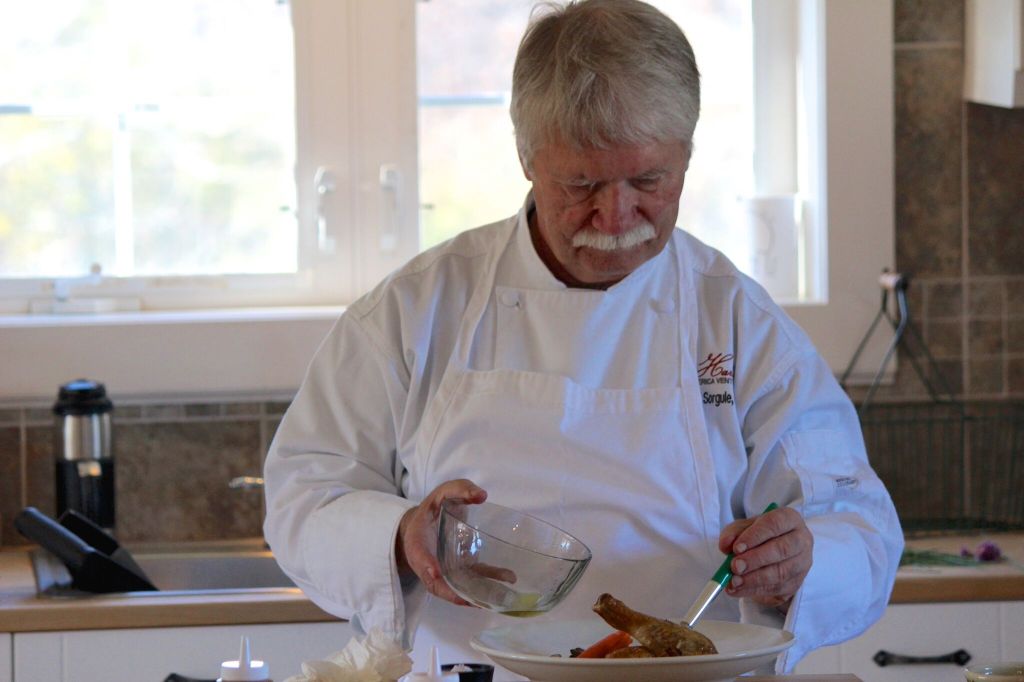
One of the dilemmas restaurateurs’ face is the approach taken with the management and delivery of a restaurant concept and menu. To make it simple, the restaurant can choose to be either chef centric or restaurant centric. This involves, first and foremost, the decision regarding who to hire as chef and sous chef and the level of control this person will be given. In a chef-centric operation, the leadership of the culinary team will be given significant freedom to plan menus, design specific dishes, put his or her signature on the food leaving the kitchen, how the culinary team will be hired and trained, from whom the operation will purchase raw materials, and the relationship of the beverage program to the food menu. In a restaurant centric operation, it is the management team, including marketing, who determines the expressed needs of the market, what specific dishes would draw the most guest support, and how to manage all to ensure maximization of profit. Either choice can be viewed as key to success or failure.
A chef centric operation relies on the life experiences, acquired skill, and reputation of the chef to create a menu concept that has a strong footing in profitability and execute the same in a consistent, cost-effective manner. The hiring process, specifically the vetting of candidates for the position is critical. The right choice can bring accolades and guest support – the wrong choice can negatively define the brand as cautionary. The menu is oftentimes a statement by the chef; a statement of his or her beliefs, likes and dislikes, and experiences. Emotional connections are a significant driver in these operations. “This menu is who I am.”
A restaurant centric operation relies on analytics, competitor analysis, surveys, budgeting, price comparisons, and knowledge of what the marketplace is comfortable with. Again, the vetting of chef candidates is critical. The operation will seek candidates who are able to set aside the emotion of a concept and dishes and rely primarily on the data that is accumulated. Emotion is far less of a driver in these operations.
Chef centric operations know that philosophical connections with producers and vendors is essential when building their menus. They look for consistent, personalized quality commitments, a “yes” attitude when special requests are made, dependability, and a pricing that makes sense. Purchasing is a personal process typically done face-to-face with the chef and the vendor.
Restaurant centric operations look for the best price, quantity discounts, terms of payment, and dependability in service. Purchasing is an oftentimes impersonal process done over the phone, through review of price quotes, or on-line.
Chef centric operations tend to have culinary personality, an adventurous style, and an aura of mystery that the chef brings to the plate. Dishes may be reasonably consistent, but like artisan wine or live music, there is always an opportunity for the signature to change a bit each time. This can create a high level of intrigue among those who love innovation and are always ready to see what the chef can do. Every cook, although committed to replicating what the chef intends to represent through the menu, brings his or her uniqueness to the stove. In these operations, the plate is a canvas on which every cook paints with their own passion. The occasional interpretation or improvisation tends to bring a level of excitement to the dining room and the kitchen.
In a restaurant centric operation, the standards are what defines the restaurant. Guests always know what to expect from the menu, each dish, the service offered, and the overall feel of the operation. Cooks are expected to follow these standards and never deviate. The reputation of the business is based on “no surprises”. To this end, cooks know exactly what to do and are trained to execute accordingly. This leads not only to product consistency, but also cost dependability.
In a chef centric restaurant, the operator is dependent on the expertise and presence of the chef who defined the concept, the menu, the systems, the skills of the cooks, and the flavor of the operation. If that chef chooses to leave for employment elsewhere then all that structure comes into question. Will the operation be able to maintain what has been built? Will guests find concern in the departure of the chef whom they admire? Will the flavors and presentations of the food suffer? Will the operation be able to replace the chef with someone of the same mindset or will it be necessary to change as a new chef offers a different signature?
In a restaurant centric operation, the standards are well defined, the vendor requirements are spelled out, costs are structured into a pricing model, cooks are trained to the standard, presentations are vividly displayed, and the chef is there to make sure standards are kept in line. So, the departure of one chef is not as much a concern – the operation will move on with heavy reliance on an established business model.
There is a need for and room for both types of restaurants. The question is “how do restaurateurs want to be perceived” and how committed are they to moving with the ebb and flow of a model more based on the art of cooking vs. the analytical model that thrives on standards and consistency?
This is a critical “upfront” question and decision for anyone entering the business of food that may just stem from a very important question: “Why do I want to open a restaurant?”
*Photography by Chef Curtiss Hemm – Carriage House Cooking School
PLAN BETTER – TRAIN HARDER
Harvest America Ventures, LLC
Restaurant Consulting
www.harvestamericacues.com BLOG
(Over 800 articles about the business and people of food)
CAFÉ Talks Podcast
https://cafemeetingplace.com/cafe-podcasts
More than 70 interviews with the most influential people in food

Leave a comment